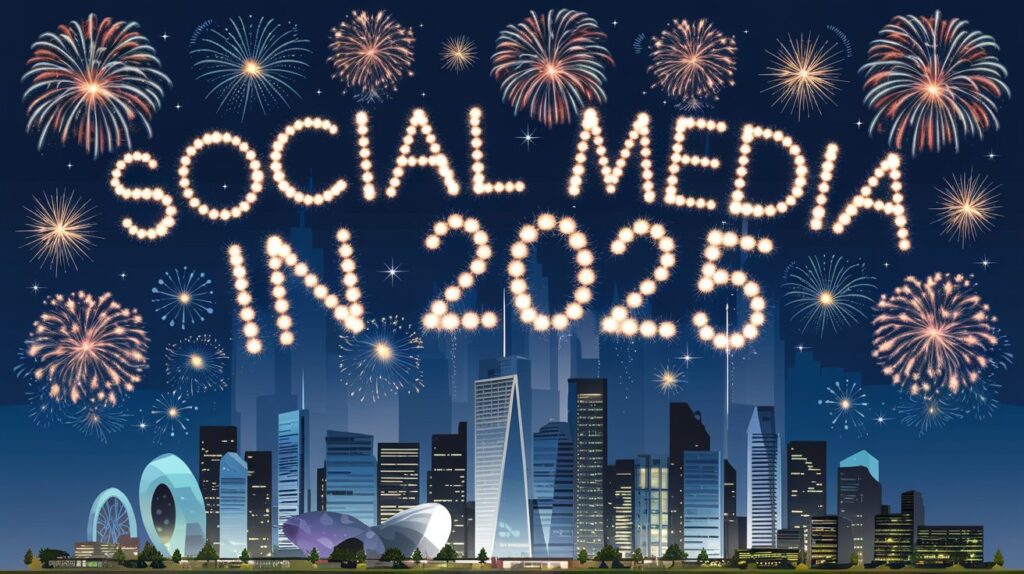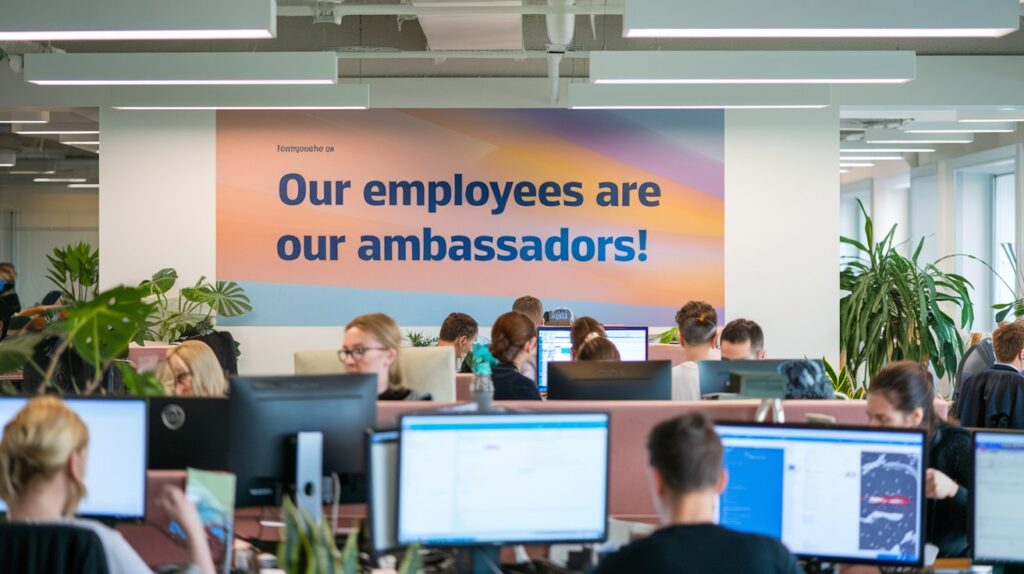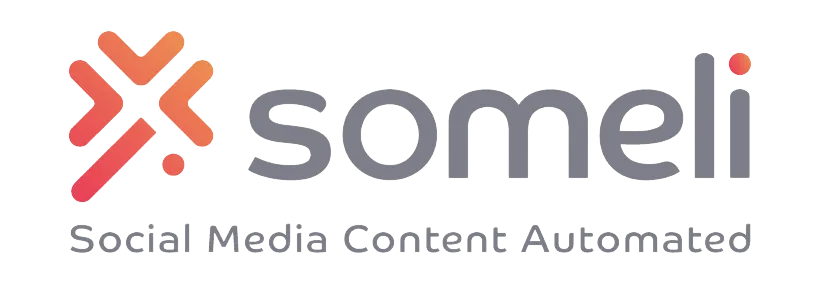5 Proven Tactics to Grow Your Social Media Presence in 2025

Are you looking to expand your reach and grow your social media following? Social media growth doesn’t happen overnight, but with the right strategies, you can steadily build a loyal and engaged audience. In this post, we’ll explore five proven tactics that can help you achieve just that. These strategies have been tried and tested by social media experts, and they’re designed to be actionable and effective. Let’s dive in! 1. Super Short Videos: Capture Attention Quickly Short-form videos are dominating social media platforms like Instagram Reels, TikTok, and YouTube Shorts. These videos are designed to grab attention in just a few seconds and keep viewers engaged. Here’s how to create impactful short videos: How to Create: Why It Works: Pro Tip: Experiment with different types of text overlays to see what resonates most with your audience. For example, if you’re in the fitness niche, try sharing quick workout tips or motivational quotes. 2. Top Five Creators: Leverage Existing Networks Collaborating with other creators is a powerful way to grow your audience. By promoting others, you can build relationships and gain exposure to their followers. How to Do It: Why It Works: Pro Tip: Don’t just stop at tagging creators. Engage with their content regularly by commenting and sharing. This builds a stronger connection and increases the chances of them noticing you. 3. The Return Factor: Give People a Reason to Stay Attracting new followers is only half the battle. To grow your social media presence, you need to give people a reason to stick around. How to Do It: Why It Works: Pro Tip: Use a consistent posting schedule for your exclusive content. For example, host a live session every Friday and promote it throughout the week. 4. Repel People: Attract the Right Audience It might sound counterintuitive, but trying to appeal to everyone can dilute your message. Instead, focus on creating content that speaks directly to your ideal audience. How to Do It: Why It Works: Pro Tip: Don’t be afraid to share your opinions or unique perspective. This helps you stand out and connect with like-minded people. 5. Partner Up: Collaborate for Growth Collaboration is one of the fastest ways to grow your social media presence. By working with other creators or brands, you can tap into new audiences. How to Do It: Why It Works: Pro Tip: When collaborating, choose partners whose values and audience align with yours. This ensures a more authentic connection. Conclusion Growing your social media presence takes time, effort, and a strategic approach. By implementing these five tactics – creating short videos, leveraging top creators, giving people a reason to stay, repelling the wrong audience, and partnering with others – you can significantly enhance your reach and engagement. Remember, consistency is key. Keep experimenting, learning, and adapting your strategies to find what works best for your audience. Start applying these tactics today, and watch your social media presence grow!
8 Game-Changing Social Media Trends Every Business Must Know in 2025

The social media landscape is evolving faster than ever, and 2025 is set to bring a wave of transformative trends that will redefine how businesses connect with their audiences. For corporate clients and brands, understanding these shifts is critical to staying relevant, engaging customers, and driving growth. From AI-powered creativity to the resurgence of long-form content, here’s a deep dive into the trends that will dominate social media in 2025—and how your business can leverage them. 1. Multi-Layered Hooks: The Science of Grabbing Attention In 2025, the battle for attention is fiercer than ever. With users scrolling at lightning speed, brands have just 1.7 seconds to capture attention on mobile. Multi-layered hooks—content that combines audio, visuals, and text in the opening seconds—are the secret weapon to stop the scroll. How It Works: Example in Action: A food delivery app could create a TikTok ad that starts with the sound of a doorbell, a quick shot of a delicious meal being unwrapped, and text that reads, “Dinner in 20 minutes? Yes, please!” This layered approach ensures the content appeals to multiple senses, increasing the likelihood of engagement. 2. The Return of Long-Form Content: Depth Over Speed While short-form videos have dominated platforms like TikTok and Instagram Reels, 2025 will see a resurgence of long-form content as audiences crave deeper, more meaningful experiences. Platforms are actively encouraging this shift: Why It Matters: Long-form content allows businesses to build trust, showcase expertise, and tell richer stories. For example: Pro Tip: Don’t abandon short-form entirely. Instead, use short videos as teasers to drive traffic to your long-form content. 3. The Rise of Micro-Communities: Small Groups, Big Impact The era of massive, impersonal social networks is giving way to micro-communities—smaller, niche groups where users can connect over shared interests. These communities foster deeper engagement and loyalty, making them a goldmine for businesses. Platforms Leading the Charge: Example in Action: A fitness brand could create a private Instagram group for customers who’ve purchased their products, offering exclusive workout tips, live Q&A sessions, and a space for members to share their progress. This not only builds loyalty but also turns customers into brand advocates. Why It Works: Micro-communities create a sense of belonging, which is invaluable in an increasingly fragmented digital world. For businesses, it’s an opportunity to foster genuine relationships and gather direct feedback. 4. Zero-Click and Minimal-Click Content: Value Without the Extra Steps In 2025, users expect instant gratification. Zero-click content—posts that deliver all the value upfront without requiring users to click elsewhere—is becoming the norm. Examples of Zero-Click Content: Why It’s Effective: By reducing friction, businesses can keep users engaged longer. For example, a real estate company could post a carousel on Instagram showcasing “Top 5 Neighborhoods to Watch in 2025,” complete with photos, stats, and key insights—all within the post. 5. The Comeback of Multiformat Content: Diversify or Die Gone are the days when video was the only format that mattered. In 2025, platforms are giving equal weight to photos, carousels, and text-based posts, encouraging brands to diversify their content strategies. How to Leverage Multiformat Content: Example in Action: A beauty brand could post a mix of: This approach ensures the brand reaches different audience segments and keeps its content fresh. 6. Shortened Trend Cycles: Stay Agile or Get Left Behind Social media trends are moving faster than ever, with some lasting only a few weeks. For businesses, this means staying agile and ready to pivot. How to Keep Up: Example in Action: A clothing brand could jump on a trending TikTok sound to showcase their latest collection, but they should also be prepared to pivot to the next trend within weeks. 7. AI-Triggered Creativity: Unlocking New Possibilities Artificial intelligence is revolutionizing content creation, making it easier for businesses to produce high-quality, innovative content. AI Tools to Watch: Example in Action: A small business could use AI to create a professional-looking product demo video, complete with AI-generated voiceovers and animations, at a fraction of the cost of traditional production. Why It Matters: AI lowers the barrier to entry, allowing even small businesses to compete with larger brands in terms of creativity and production quality. 8. The Continued Growth of Social Commerce: Shopping Made Social Social commerce is becoming a cornerstone of social media, with platforms like TikTok, Instagram, and Pinterest doubling down on e-commerce features. Key Developments: Example in Action: A home decor brand could host a live shopping event on Instagram, showcasing their latest collection and offering exclusive discounts to viewers who purchase during the stream. Why It’s Effective: Social commerce shortens the customer journey, making it easier for users to discover, evaluate, and purchase products—all within the same platform. Conclusion: Adapt, Innovate, and Thrive The social media trends of 2025 are reshaping the way businesses connect with their audiences. From leveraging AI tools to building micro-communities and embracing multiformat content, the key to success lies in adaptability and innovation. By staying ahead of these trends, your business can not only survive but thrive in the ever-changing digital landscape. Are you ready to embrace the future of social media? Let these trends guide your strategy and help you build stronger, more meaningful connections with your audience.
Action Plan for Social Media in 2025

Social media continues to evolve rapidly, and 2025 is no exception. To stay ahead of the curve, businesses and marketers need a clear, actionable plan that incorporates the latest trends, best practices, and proven strategies. This blog post will guide you through creating a comprehensive social media action plan for 2025, step by step. Step 1: Define Your Goals Before diving into content creation or campaigns, it’s essential to set clear, measurable goals. Use the SMART framework to ensure your goals are: Example Goals: Step 2: Research and Understand Your Audience Knowing your audience is critical to creating content that resonates. Use AI-powered tools like Hootsuite, Sprout Social, or Talkwalker to gather insights about your audience’s demographics, interests, and behaviors. Key Actions: Step 3: Audit Your Current Social Media Presence Before building a new strategy, evaluate your existing social media efforts. Conduct a social media audit to identify what’s working and what’s not. Key Actions: Step 4: Choose the Right Platforms Not all platforms are created equal. Focus on the ones that align with your goals and audience. Platform Trends for 2025: Step 5: Develop a Content Strategy Content is the backbone of your social media strategy. Plan your content to align with your goals and audience preferences. Key Actions: Step 6: Invest in Video Content Video remains the most engaging content format. In 2025, prioritize short-form and interactive videos. Best Practices: Step 7: Launch Campaigns and Engage Once your content is ready, it’s time to launch campaigns and actively engage with your audience. Key Actions: Step 8: Monitor Performance and Adjust Social media is dynamic, so regular monitoring and adjustments are crucial. Key Metrics to Track: Tools to Use: Step 9: Embrace Emerging Trends Stay ahead by adopting new trends and technologies. Trends to Watch: Step 10: Reflect and Plan for 2026 As the year ends, evaluate your progress and set the stage for the next year. Key Actions: Best Practices for 2025 Conclusion A successful social media strategy in 2025 requires careful planning, consistent execution, and a willingness to adapt. By following this step-by-step action plan, you’ll be well-equipped to grow your brand, engage your audience, and achieve your business goals. Start now, and make 2025 your most impactful year yet!
Turn Your Team into Your Best Brand Champions!

Ever wondered how some companies seem to have this amazing online presence, with their content spreading like wildfire across social media? Well, let me let you in on a little secret: it’s not just their marketing team doing all the heavy lifting – it’s their employees! Welcome to the world of employee advocacy, folks! What’s Employee Advocacy, Anyway? 🤔 Think of it as your employees being your brand’s cheerleaders on social media. But wait – we’re not talking about forced, robotic sharing of company posts! It’s about employees genuinely wanting to share their workplace experiences, company news, and industry insights with their personal networks. Pretty cool, right? The Numbers Don’t Lie 📈 Let me blow your mind with some stats that’ll make you sit up straight: What’s in it for Your Team? 🎯 Now, I know what you’re thinking: “That’s great for the company, but what about my employees?” Well, they get some pretty sweet benefits too: Common Pitfalls to Watch Out For ⚠️ Let’s keep it real – not every employee advocacy program is a success story. Here are some potential stumbling blocks and how to dodge them: Your Action Plan 🚀 Ready to get this show on the road? Here’s your step-by-step game plan: The Secret Sauce 🌟 Want to know what really makes employee advocacy work? It’s creating a program that your employees actually want to be part of. When your team is genuinely excited about your company and feels valued, they’ll naturally want to share that enthusiasm with their networks. Wrapping It Up 🎁 Employee advocacy isn’t just another corporate program – it’s about harnessing the authentic voices of your greatest asset: your people. When done right, it’s a win-win situation that benefits both your company and your employees. Remember: your employees are already talking about their work life on social media. Why not give them the tools, support, and encouragement to do it in a way that benefits everyone? Ready to transform your employees into brand champions? The time is now! Let’s get that employee advocacy program rolling! 🚀 P.S. Have you already tried implementing employee advocacy in your company? I’d love to hear about your experiences in the comments below! 👇
How to Master the Power of Consistency on Social Media in 2025

Social media success doesn’t happen overnight. It’s not about a single viral post or sporadic bursts of creativity; it’s about showing up, engaging, and delivering value consistently. Yet, despite its importance, maintaining a steady social media presence can feel like an uphill battle for many businesses and creators. Why is it so hard to stay consistent, and what can you do to overcome the common hurdles? Let’s dive in. Why Consistency Is the Secret Ingredient to Social Media Success Think about your favorite brands on social media. Chances are, they post regularly, have a recognizable tone, and always seem to show up when you need them. This is the essence of consistency: it builds trust, strengthens your brand identity, and keeps your audience engaged. Here are a few key reasons why consistency matters: Why Staying Consistent Is So Hard Despite its importance, many businesses and creators struggle to maintain a steady social media presence. Here’s why consistency often feels like a herculean task: Overcoming the Obstacles: Practical Strategies for Consistency The good news is that with the right strategies and tools, you can make consistency more achievable—and even enjoyable. Here’s how: 1. Create a Content Calendar A content calendar is your blueprint for social media success. It helps you plan posts in advance, maintain a balance of content types, and ensure you never miss important dates. 2. Batch Create Content Set aside dedicated time to create multiple pieces of content in one go. This approach minimizes daily effort and ensures you always have a backlog of posts ready to go. 3. Repurpose Content Across Platforms Save time by reusing content in different formats for different platforms. For example, turn a blog post into an Instagram carousel or repurpose a YouTube video into shorter clips for TikTok and Instagram Reels. 4. Automate Scheduling Use scheduling tools to publish posts automatically. Tools like Sprout Social, Later, and Buffer allow you to queue posts ahead of time, freeing you from the daily grind of manual posting. 5. Develop a Clear Content Strategy A well-defined strategy ensures you know what to post and why. Outline your target audience, goals, and key themes, then create content that aligns with them. 6. Engage Without Overthinking Consistency isn’t just about posting—it’s also about interacting with your audience. Set aside a few minutes daily to reply to comments, answer DMs, and engage with other users’ content. 7. Track Performance and Adjust Monitor your analytics to understand what works and what doesn’t. Use this data to refine your strategy and focus on content that resonates with your audience. A Story of Persistence: How a Small Brand Grew with Consistency Consider the story of a small bakery that started posting daily behind-the-scenes videos of their bread-making process on Instagram. Initially, engagement was minimal. But they stayed consistent, posting every morning at 9 AM, sharing tips, and responding to comments. Over six months, their following grew from 300 to 15,000. The secret? Regularity built anticipation, trust, and a loyal community of bread lovers. Conclusion: Turning Insights into Action Consistency is the backbone of any successful social media strategy. While it may seem challenging, the rewards—stronger brand recognition, deeper audience engagement, and better visibility—make it worthwhile. Here’s how you can start applying these principles today: By prioritizing consistency and leveraging the right strategies, you can turn social media into a powerful tool for growth and connection. Start small, stay steady, and watch your efforts pay off.
Social Media Around the World: What the Numbers Say and How You Can Benefit

If you’re a business owner or just someone curious about social media, you’re in the right place. Today, we’re diving into some fascinating social media marketing statistics from different regions around the globe. Understanding these numbers can help you connect better with your audience and grow your business. Let’s break it down! The Big Picture: Global Stats As of early 2024, there are about 5.16 billion people using social media. That’s more than half of the world’s population! On average, people spend around 2 hours and 23 minutes each day scrolling through their feeds. Most of this happens on mobile devices, which means if your content isn’t mobile-friendly, you might be missing out! Key Global Highlights: Now, let’s zoom in on different regions and see what these numbers mean for you as a business owner. Northern Europe How to Benefit: Out-of-the-Box Tips: Western Europe How to Benefit: Out-of-the-Box Tips: Southern Europe How to Benefit: Out-of-the-Box Tips: North America How to Benefit: Out-of-the-Box Tips: Asia-Pacific How to Benefit: Out-of-the-Box Tips: Latin America How to Benefit: Out-of-the-Box Tips: Middle East and Africa How to Benefit: Out-of-the-Box Tips: Final Thoughts Understanding social media statistics across different regions can help you tailor your marketing strategies effectively. Whether you’re creating engaging content, running targeted ads, or collaborating with influencers, these insights can guide you in reaching your audience more effectively. So, take a look at these numbers, think about your target market, and start crafting your social media strategy today! Happy posting!
8 Free AI Image Generator Showdown: Which Platform Ranks Best?

AI image generators have revolutionized creativity, making it easier than ever to create stunning visuals, even without design experience. With so many free options on the market, finding the right tool can be challenging. Today, we’ll explore some of the top free AI image generation platforms, examining what each has to offer and where they shine. 1. Craiyon Craiyon, formerly known as DALL-E Mini, has built a reputation for versatility by offering various models, including the powerful Flux model. Each day, users get 150 stamina points, roughly translating to 15 free image generations, giving users ample room to explore different visual styles. Craiyon’s customization options are extensive, making it great for users wanting a range of unique, experimental images. While this flexibility is a major strength, it can be overwhelming for users looking for a simpler interface. Still, with its wide customization range, Craiyon is ideal for those wanting highly varied results and a platform that encourages creative experimentation. 2. Leonardo.ai Leonardo.ai has become a go-to favorite for AI image generation, particularly for its exceptional Leonardo Phoenixmodel. This model delivers high-quality images with vivid details and depth, making it perfect for anyone looking for top-tier results. Users get 150 tokens daily, enough for six sets of four-image generations, offering ample creative freedom without a paid upgrade. Leonardo’s generous daily tokens allow users to experiment frequently and create consistently high-quality images. Its simple credit system is easy to track, and the platform’s streamlined interface provides a smooth user experience. With Phoenix’s superb image quality, Leonardo is an ideal choice for anyone seeking reliable, high-quality results that match professional standards. 3. Canva Canva’s Magic Media feature integrates AI image generation into its widely-used design platform. Free users can generate up to 50 images each month, while pro users have a monthly cap of 500. Canva also includes limited access to the DALL-E model, offering two free image generation credits. The integration of AI image creation directly within Canva’s design suite is convenient for existing users familiar with Canva’s interface. Although Canva’s AI generation tool offers a simple, accessible way to create images, its output quality generally falls short of more specialized platforms. This tool is great for quick visuals but may not fully meet the needs of users seeking highly customized, polished imagery. For casual creators or Canva fans, however, it offers valuable added functionality. 4. Adobe Firefly Adobe Firefly is Adobe’s entry into AI image generation, bringing robust customization options like style filters, effects, and control over color tones and composition. Free users receive around 25 credits per month, with the option to subscribe to Creative Cloud for 1,000 monthly credits, allowing for broader use and deeper customization. Firefly’s high-quality output and deep customization options make it a top pick for users seeking tailored visuals. However, users on the free plan may find themselves limited, and beginners or those wanting quick generation might find Adobe’s advanced options overly complex. For detailed control and quality, Adobe Firefly is a powerful option, especially for users familiar with Adobe’s other tools. 5. Krea.ai Krea.ai has gained popularity by leveraging the advanced Flux model, which provides excellent image quality with quick processing. Free users are allotted around three minutes of generation time daily, equivalent to approximately 18 images, offering a generous balance of accessibility and high-quality results. One of Krea’s strengths lies in its versatility: beyond static images, the platform also supports video generation, which broadens its appeal for users working across mediums. For those who want consistent, high-quality image output without complex adjustments, Krea is an ideal choice that delivers reliability and ease. 6. CGD Dream.ai CGD Dream.ai combines the Flux model with Lura-based filters to offer exceptional detail and image quality. With 3,000 monthly credits (around 100 credits daily), CGD Dream.ai users can generate up to 160 images monthly, though the platform’s popularity can lead to queue times for free users. Nonetheless, Dream.ai’s high-resolution results and range of customization options make it worth the wait. This platform is a solid option for users who need refined detail and professional-quality images. CGD Dream.ai strikes a balance between high-quality output and usability, making it a great choice for both professional projects and personal creative exploration. 7. Kido.ai Kido.ai is unique in its focus on merchandise design, especially for items like mugs, t-shirts, and other physical products. By combining AI with design-specific features such as background removal, Kido makes it easy to create polished, ready-to-use images for various products. Free users receive 20 single-use credits, and pro plans offer daily credits ranging from 30 to 80 credits, depending on the subscription. For entrepreneurs or creatives interested in creating custom merchandise, Kido offers a powerful, specialized platform that takes the guesswork out of graphic design. This makes it a standout tool for anyone looking to bring unique product designs to life with minimal effort. 8. Ideogram Ideogram is a recent addition to the AI image generator field, standing out for its ability to produce complex, realistic images. Free users are given a moderate daily image quota, and the platform includes flexible image manipulation options, such as layered adjustments and filters that add depth and realism to visuals. Ideogram’s model is optimized for photorealistic textures, which makes it ideal for users seeking lifelike imagery. Ideogram’s interface is user-friendly, and its customization capabilities are appealing to digital artists and photographers looking to enhance images. With its emphasis on photorealism, Ideogram fills a unique niche, although it may not offer the quick-and-easy customization options available on platforms like Canva or Krea.ai. Conclusion: Choosing the Right Free AI Image Generator Each of these AI image generators has something unique to offer, with strengths that cater to different creative needs. Leonardo.ai, Krea.ai, and CGD Dream.ai are standout options, offering high-quality images and flexibility for users wanting consistent, polished results. Meanwhile, Canva and Adobe Firefly are reliable choices for users already familiar with their broader design ecosystems. For casual creators or beginners, Canva and Leonardo.ai provide accessible starting points with easy-to-track credits and straightforward interfaces. Ideogram and Kido.ai offer more specialized applications, whether for photorealistic visuals or product-ready designs, and are ideal for users with
What is a Social Media Hook and Why it Matters?

A social media hook is a short and catchy part at the beginning of any content designed to grab your audience’s attention. It could be a thought-provoking question, a surprising statement, a captivating image, or a story that pulls people in. The goal is to make people curious enough to keep watching or reading. A good hook stops people from scrolling and gets them interested in what you have to say. Why Hooks Matter Hooks are super important because they catch attention right away. With short attention spans these days, you don’t have much time to get someone to stick around. According to Cross River Therapy, the average person’s attention span is just 8.2 seconds, which is actually shorter than it was back in 2000 by 4.2 seconds! What Makes a Great Hook? A great hook always: 100+ Examples of Hooks for Your Videos and Social Media Posts Using the Right Hook for Your Video and Social Media Posts It’s essential to align your hook with the tone and purpose of your video. A hook is not just about grabbing attention; it should also set the right expectation for what the viewer is about to experience. If your video is light-hearted and fun, your hook should reflect that energy, pulling the viewer in with something playful or surprising. On the other hand, if the content is more serious or educational, a thoughtful or informative hook will resonate better with your audience. Matching the tone helps create a seamless flow from the hook to the rest of the video, keeping viewers engaged because the transition feels natural. If the hook is too disconnected from the overall message or mood of the content, viewers may feel misled or lose interest quickly. The key is to ensure that the hook not only catches their attention but also holds it by offering a clear connection to the main content. Beyond tone, consider the emotion you want to evoke with your hook. Whether you aim to inspire, intrigue, or entertain, the right emotional trigger can deepen the viewer’s connection to your video, making them more likely to stick around and engage with your content. Understanding your audience and the kind of emotional impact you want to have will help you craft hooks that feel authentic and compelling. What About Transitional Video Hooks? Besides having a killer hook to start your video, you can also use a “transitional hook.” This type of hook builds on the energy of a viral video to keep people engaged. It makes your content flow smoothly and keeps the audience watching. If done right, this can make your video really stand out and leave a lasting impact. Want to learn more about this? Check out our full blog post on “Transitional Hooks for Social Media.” Conclusion To wrap it up, using hooks in your social media content is a must if you want to grab and keep people’s attention in today’s fast-paced world. With so much content out there, a strong hook helps you stand out. It draws people in, keeps them watching, and helps you achieve your goals, whether it’s raising brand awareness, sharing a message, or entertaining your audience. Simply put, good hooks help you cut through the noise and connect with your audience. FAQs About Social Media Hooks Why are social media hooks important?Social media hooks help you cut through the clutter and grab your audience’s attention. They can make people stop, watch, and engage with your content, leading to stronger connections with your brand. What is a viral hook?A viral hook is what makes your content memorable. It’s the thing people instantly associate with your brand and feel compelled to share with others. How long should a hook be?You need to capture attention quickly. Research shows people decide in the first 30-60 seconds if they’re interested in your content, and the first 8 seconds are the most crucial. So, use those seconds wisely! What’s the point of a social media hook?A hook grabs attention and keeps viewers engaged with your content. By using hooks, you can prevent people from scrolling past your video, reach new audiences, and create meaningful engagement.
Unlocking Social Media Success: 7 Strategies You Need for 2024

Imagine this: you’re scrolling through social media, bombarded by countless posts, ads, and videos. What catches your attention? What makes you stop, engage, and even take action? That’s the challenge every business faces today. With so much noise online, how do you make sure your content stands out and turns into actual results? The answer lies in having a solid strategy. Here are seven strategies that can help you break through the clutter and build a powerful online presence. Let’s dive into how you can unlock your social media’s true potential. 1. Crafting Your Marketing Master Plan Throwing content at the wall and seeing what sticks isn’t going to work in 2024. You need a well-thought-out marketing blueprint that drives everything you post and promote. Here’s how to get it right: 2. The Power of Video Content Video isn’t just a trend—it’s a necessity. Platforms like Instagram, TikTok, and YouTube have made video the dominant form of content, and it’s clear why: people engage more with visual stories. Here’s how to harness it: 3. Long-Form Content for Lasting Impact While quick, snackable content is all the rage, long-form content shouldn’t be ignored. It serves a different purpose and offers long-term benefits: 4. Quality vs. Quantity: Finding the Sweet Spot Social media often feels like a race to churn out as much content as possible. But in 2024, balance is key: 5. Analyze and Understand Your Audience Knowing your audience inside and out is the bedrock of any successful social media strategy. If you don’t understand who you’re speaking to, your content is just noise. Here’s how to refine your understanding: 6. Embrace Video as King It’s worth repeating: video content reigns supreme. While short-form videos are incredibly popular, long-form content holds immense value as well. The key is striking a balance between quick, engaging clips and more substantial pieces that establish your expertise. 7. The Perfect Balance of Quality and Consistency In the race to post regularly, don’t sacrifice quality for quantity. Here’s how to strike the right balance: By applying these 7 strategies, you can turn your social media efforts into a revenue-generating engine. Success in 2024 isn’t about being everywhere; it’s about being intentional with your strategy.
Enhancing Your Restaurant’s Online Presence: A Guide to Social Media Visibility

In today’s digital age, having a strong online presence is crucial for the success of any business, especially in the competitive restaurant industry. With the rise of social media platforms, restaurants have a unique opportunity to connect with their target audience, increase brand awareness, and ultimately drive more foot traffic. In this guide, we’ll explore effective strategies that restaurant owners can implement to enhance their online visibility and leverage the power of social media to attract more patrons. The Power of Social Media for Restaurants Social media has revolutionized the way restaurants market themselves and engage with customers. According to recent statistics, more than 80% of diners are influenced by online reviews and social media when choosing a place to eat. Successful restaurant promotions on platforms like Instagram and Facebook have demonstrated the immense potential of social media in driving customer acquisition and retention. Content Creation: The Heartbeat of Social Engagement Creating engaging and visually appealing content is essential for capturing the attention of your target audience on social media. Behind-the-scenes footage, special dishes, and chef spotlights are just a few types of content that can attract patrons and showcase your restaurant’s unique personality. By consistently sharing authentic content that resonates with your audience, you can establish a strong online presence and foster meaningful connections with your customers. Leveraging the Influence of User-Generated Content User-generated content, such as customer reviews and photos, can be a powerful tool for building credibility and trust with potential diners. Encouraging customers to check-in and tag your restaurant on social media, as well as running contests and campaigns to incentivize user participation, can help generate a steady stream of authentic content that showcases the dining experience at your establishment. Hashtags and Geo-Location: The Untapped Potential Hashtags and geo-location tags are valuable tools for increasing discoverability and reaching a wider audience on social media. By using relevant hashtags and geo-tags in your posts, you can connect with users who are searching for restaurants in your area or are interested in specific cuisines or dining experiences. Additionally, creating branded hashtags can help establish your restaurant’s identity and encourage user engagement. Collaborations and Partnerships Partnering with local influencers, food bloggers, and businesses can amplify your restaurant’s reach and attract new customers. By collaborating with influencers who align with your brand values and target audience, you can leverage their existing following to promote your restaurant and increase visibility within your community. Cross-promotions with other local businesses and participation in community events can also help expand your reach and attract new customers. Timing and Frequency: When to Post for Maximum Exposure Understanding the best times to post on different social media platforms is key to maximizing engagement and visibility. By analyzing your audience demographics and using social media analytics tools, you can determine the optimal posting times for reaching your target audience. Balancing the frequency of posts with high-quality content is also important for maintaining audience interest and engagement. Engaging with the Community: More Than Just Posting Engaging with your audience goes beyond simply posting content – it involves actively interacting with customers and participating in conversations online. Responding to comments and messages in a timely manner, joining local and food-related social media groups, and hosting live sessions and interactive events are all effective ways to engage with your community and strengthen relationships with your customers. Paid Advertising: Boosting Visibility with Social Ads Paid social media advertising offers a targeted and cost-effective way to reach potential customers and increase visibility for your restaurant. With options for precise audience targeting and ad placement, you can ensure that your ads are seen by users who are most likely to be interested in your offerings. By tracking the return on investment (ROI) of your ad campaigns and adjusting your strategies accordingly, you can optimize your advertising efforts for maximum effectiveness. Tracking Progress and Adapting Strategies Measuring the success of your social media efforts is essential for identifying what’s working and what’s not. Key performance indicators (KPIs) such as engagement rate, reach, and conversion can provide valuable insights into the effectiveness of your social media strategies. By regularly monitoring and analyzing your social media performance, you can identify areas for improvement and adapt your strategies to better meet the needs and preferences of your audience. Conclusion Enhancing your restaurant’s online presence through social media is a continuous process that requires dedication, creativity, and strategic planning. By implementing the strategies outlined in this guide – from creating compelling content to engaging with your community and leveraging paid advertising – you can effectively increase your restaurant’s visibility and attract more patrons. Stay current with social media trends, experiment with new tactics, and don’t be afraid to adapt your strategies as needed to stay ahead in the ever-evolving digital landscape. Call to Action Ready to take your restaurant’s online presence to the next level? Start implementing the strategies outlined in this guide today and watch as your social media visibility and customer engagement soar. Don’t forget to engage with this post by sharing your thoughts in the comments below and sharing it with fellow restaurant owners who can benefit from these tips. For more personalized advice and guidance on maximizing your restaurant’s social media presence, feel free to reach out to us – we’re here to help you succeed!
